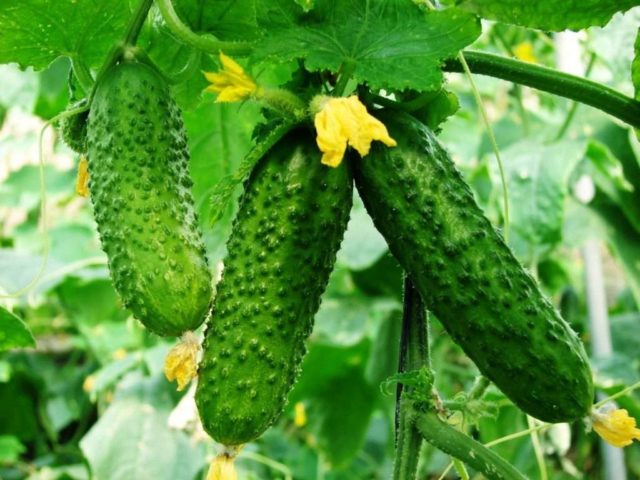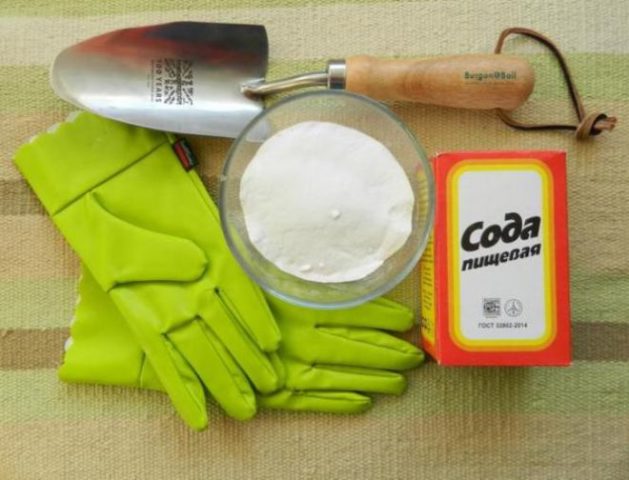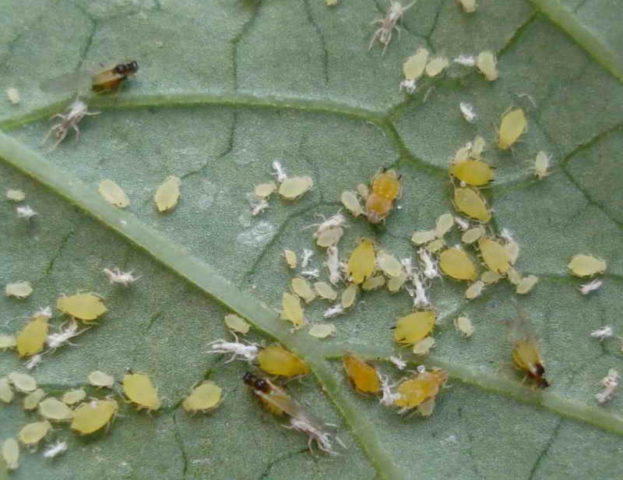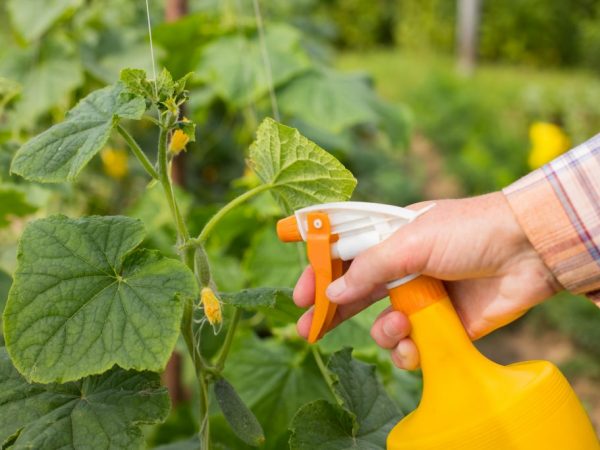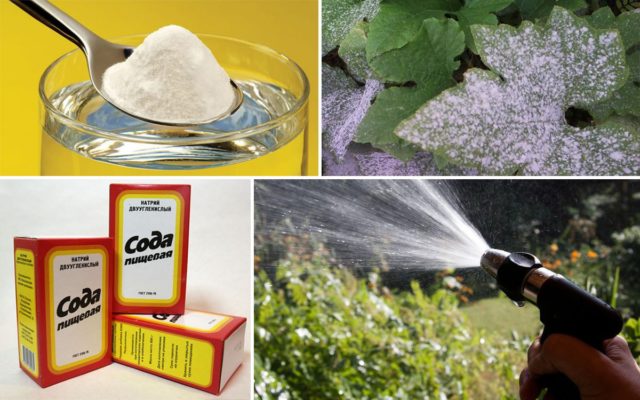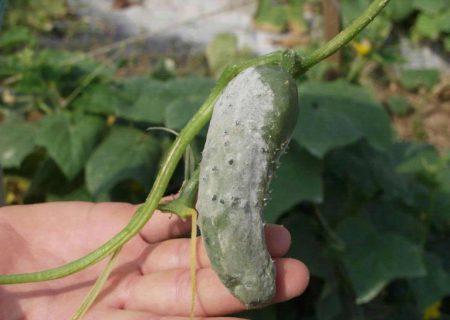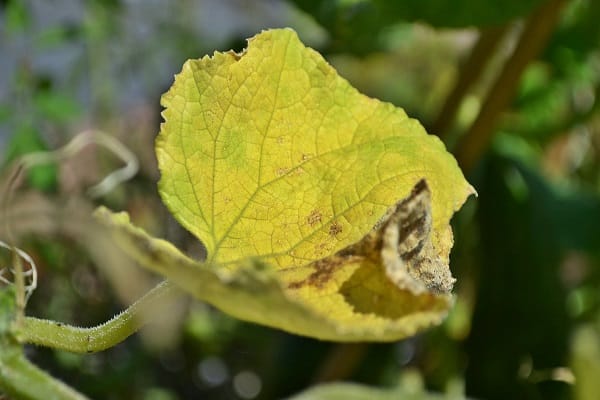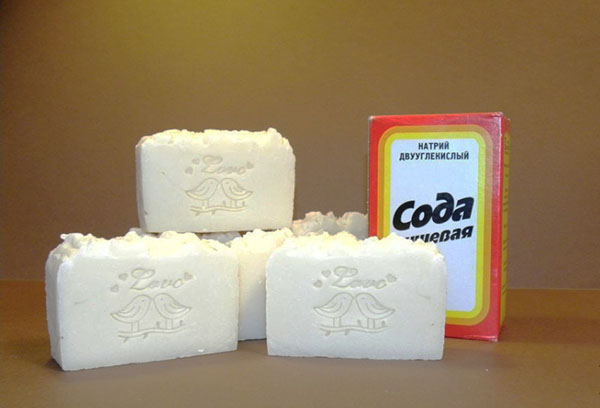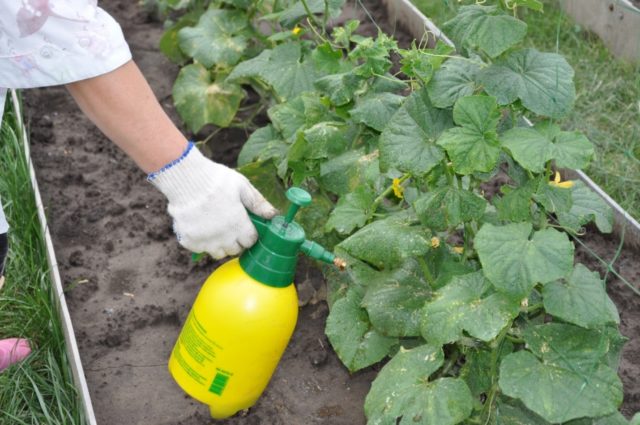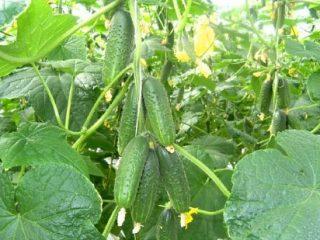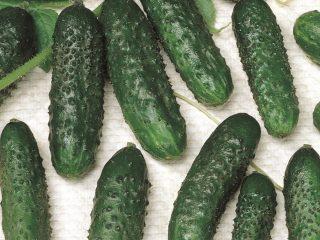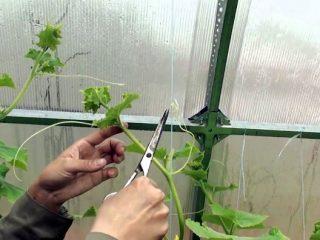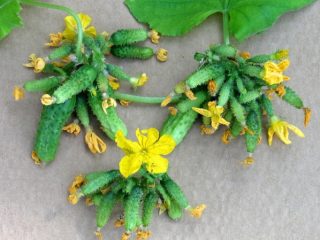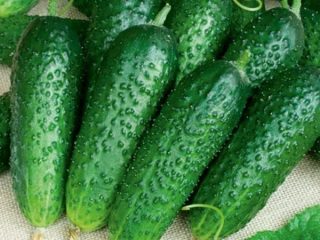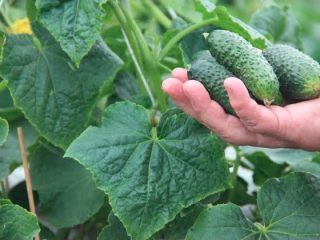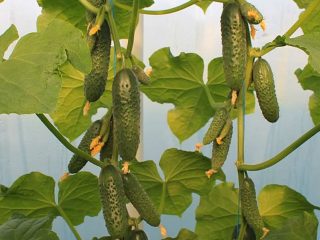Content
- 1 Benefits of using soda on cucumber beds
- 2 Using baking soda against aphids on cucumbers
- 3 How to get rid of spider mites on cucumbers using baking soda
- 4 How to use baking soda on cucumbers against powdery mildew
- 5 How soda helps in the fight against white rot of cucumbers
- 6 How to use baking soda on cucumbers when spots appear and leaves turn yellow
- 7 Rules for using baking soda as a fertilizer
- 8 Rules of application
- 9 Conclusion
Soda for aphids on cucumbers is a reliable method, time-tested and tested by many summer residents. The solution is used to disinfect seeds, prevent the appearance of fungal, bacterial, and viral infections, and also as a top dressing to extend the growing season and increase productivity. The solution is safe at all stages of crop growth and maturation.
Benefits of using soda on cucumber beds
Baking soda (sodium bicarbonate, sodium bicarbonate) in moderate doses is harmless to the human body and is often used in cooking and home medicine.
Summer residents have long appreciated the disinfecting properties of the powder and actively use it in their garden plots:
- for the prevention and treatment of fungal infections;
- repelling aphids, insects (together with soap);
- increasing productivity;
- active formation of ovaries, strengthening of seedlings.
Application of the composition on cucumber beds as an insecticide against aphids or fertilizer:
- safe for plants, animals and humans;
- economical (2 – 4 tablespoons of substance are required per bucket of water);
- effective.
Regular treatment prevents early withering of bushes, development of late blight, rot, powdery mildew, and the spread of pests.
How does baking soda help in the fight against aphids on cucumbers?
Summer residents note that using baking soda is one of the fastest, most effective and safest ways to kill aphids on cucumbers. Regular treatment repels insects, strengthens the bushes, and increases the resistance of cucumbers.
The composition has powerful disinfecting properties and prevents the spread of aphids to healthy bushes.
Using baking soda against aphids on cucumbers
Harvesting of cucumbers begins approximately 45 days after germination. It takes less than a week from ovary to serving the vegetable. It is not safe to use chemicals under such conditions.
In what cases can cucumbers be treated with soda against aphids?
Baking soda replaces insecticides for summer residents to combat aphids, spider mites and other pests on cucumbers. Its use is safe, it does not accumulate in fast-growing fruits, and also does not cause any harm to humans.
The powder is most effective in the early stages of pest and infection control. If the disease is advanced, potassium permanganate, laundry soap, iodine, and copper sulfate are added to the solution.
How to dilute soda to treat cucumbers against aphids
To protect cucumbers from aphids, 30–50 g of powder is dissolved in a bucket of water. The concentration depends on the degree of plant infection.
For the solution, use settled or filtered water heated to 26 - 28 degrees. First, soda is diluted, then other ingredients are added: potassium permanganate, soap, zala, iodine. All ingredients are carefully measured and weighed, ensuring that the dosage is strictly adhered to.
Before treating plants against aphids, the composition is shaken again, and it is important that the powder is completely dissolved in water without sediment. The remaining lumps of soda are too caustic and can damage the cucumbers.
How to treat cucumbers against aphids with a baking soda solution
To get rid of aphids, every 3 days the cucumber vines are generously irrigated with soda. If the bushes are weakened and begin to turn yellow, additionally apply root, more concentrated fertilizers.
To successfully process cucumbers, it is important to follow certain rules:
- Spraying is carried out in calm weather early in the morning or in the evening, when the heat subsides.
- For irrigation, special sprayers are used. The finer the spray, the more evenly the bushes will be treated.
- Sodium bicarbonate begins to be applied before the aphids cover all the vines and cause significant damage to the crop. To control pests, not only the affected bushes are sprayed, but also healthy ones growing in neighboring beds.
- The solution does not act instantly. If the first treatment does not produce results, you should not increase the concentration. It often takes 2 to 6 weeks to control aphids.
How to get rid of spider mites on cucumbers using baking soda
Spider mites are active in dry, hot weather, during the formation of ovaries on cucumbers. The pest can be recognized by a light web entangling cuttings, leaves, and flowers. The plant turns yellow and slows down.
To save the harvest, use the following composition:
- from 3 tbsp. l. sodium bicarbonate;
- 1 tbsp. soap (liquid);
- 1–2 tbsp. l. ash.
The solution is diluted in 10 liters of water, the bushes are treated with the product 2 – 3 times a week.
How to use baking soda on cucumbers against powdery mildew
When infected with powdery mildew, cucumber leaves become covered with a thin white coating. Productivity drops, the plant becomes lethargic and weakly forms new shoots and ovaries.
To combat the fungus, prepare a solution:
- 3 tbsp. l. sodium bicarbonate;
- 3 – 4 tbsp. l. laundry soap shavings;
- 10 liters of water.
The crop canes are sprayed weekly for 1.5 - 2 months.
Cucumbers damaged by downy mildew are treated every 2 to 3 days. This disease is more difficult to diagnose and treat.
If the infection is advanced and the fungus has spread to all the seedlings, add copper sulfate or potassium permanganate to the soda solution.
How soda helps in the fight against white rot of cucumbers
White rot is a fungal disease that affects shoots, fruits, stems, and root systems of both young and old plants. The disease actively develops in greenhouse growing conditions at low temperatures and high humidity. Without timely treatment, cucumber vines wither, stop bearing fruit and die over time.
To save the harvest, dilute 5 tbsp in a bucket of water (10 l). l. sodaThe resulting mixture is thoroughly sprayed on the bushes every 3 days until the symptoms disappear completely.
How to use baking soda on cucumbers when spots appear and leaves turn yellow
The leaves on cucumbers turn yellow due to a lack of nutrients, infectious or fungal infections, or improper agricultural practices.
If the exact cause of the problem is unknown, the bushes are fed every other day with a weak solution of baking soda (1 teaspoon per 10 - 12 liters of water), pouring it under the root.
Rules for using baking soda as a fertilizer
Cucumbers are fed with soda at least 3 times per season.
The bushes are treated for the first time 14 days after planting the seedlings in open ground. This promotes the active formation of ovaries and strengthening of young shoots.
After two weeks, the cucumbers are fertilized again to increase the yield and resistance of the plant to pests and diseases.
Subsequently, the beds are sprayed with a weak solution (1 tablespoon per bucket of water) once a week.
To protect plants and extend the growing season, summer residents use popular folk compositions.
Soda with ash and soap against aphids
To prepare a solution for aphids you will need:
- 4 tbsp. l. soda powder;
- 2 tbsp. ash;
- 1 crushed bar of laundry soap;
- 10 liters of water.
The ash is pre-infused for 24 hours, then the remaining ingredients are added. Cucumbers are sprayed every 7-10 days during the period of active growth.
Soda with iodine.
The composition has a strong antimicrobial effect, helps in the fight against aphids, powdery mildew, and late blight.
Dissolve in a bucket of water:
- 50 – 70 g of soap;
- 2 tbsp. l. soda;
- 1 tsp. Yoda.
Cucumbers are processed once a week until the symptoms of the disease disappear.
Soda with laundry soap.
A solution with laundry soap helps to quickly get rid of insects and protect crops from larvae and aphids.
To prepare it take:
- 1 bar of soap;
- 2 tbsp. l. soda powder;
- 10 liters of water.
To increase the effectiveness of the composition when infesting a large area with aphids, several crystals of potassium permanganate are additionally added (to a pale pink solution).
To extend the growing season, use a composition of 3 tbsp. l. soda in a bucket of water. Cucumbers are fed 3 times during the summer: at the beginning and end of July, in mid-August.
Rules of application
In order to achieve positive dynamics and visible results when treating cucumbers with soda against aphids, it is important to accurately calculate the dosage, follow the feeding schedule, and monitor the reaction of the plants.
The concentration of an aqueous solution of sodium bicarbonate depends on the purpose of its use:
- for foliar feeding, use a 0.5% solution (approximately 2 tablespoons of dry matter per 10 liters of water);
- spraying against insects – 1%;
- formation of ovaries – 3%;
- fertilizing during wilting – 5%.
Exceeding the recommended standards will cause burns to the roots and leaves.
When prophylactically treating cucumbers against aphids or applying soda as a fertilizer, it is important to follow the chosen scheme. Spraying too frequently will lead to alkalization of the soil, slow wilting, reduced yield, and death of shoots.Rare - will not give any results.
If the recommendations are not followed, sodium bicarbonate can destroy both young shoots and mature, fruit-bearing bushes. If the growth of the vines has slowed down, flowering and formation of ovaries does not occur, the plant has become lethargic, began to turn yellow, the application of soda must be stopped immediately.
Conclusion
Soda for aphids on cucumbers is a natural, reliable, economical remedy for saving the crop. Regular spraying helps not only to get rid of pests, but also to prevent the appearance of rot, powdery mildew, late blight, and to prevent early wilting and a drop in crop yield. Soda strengthens bushes, increases their resistance to diseases, and promotes active growth and fruiting. The main advantage of the product is its safety. After treating the plant against aphids, fresh cucumbers can be served the very next day.
